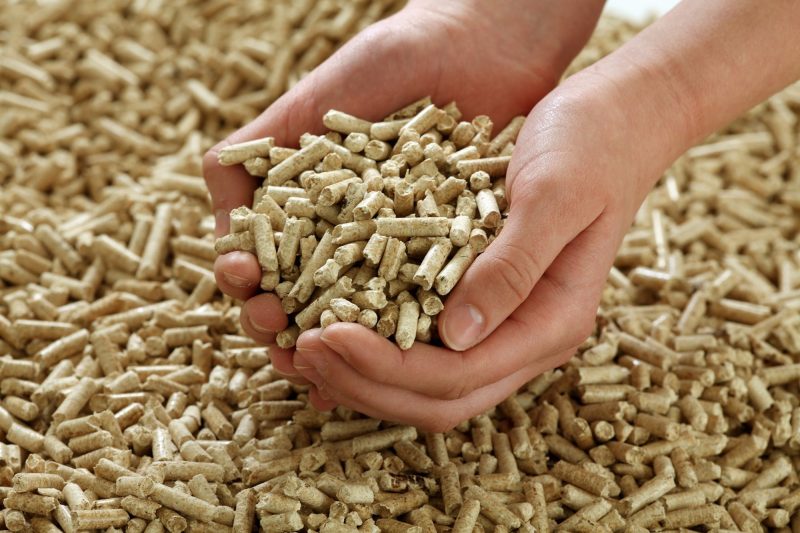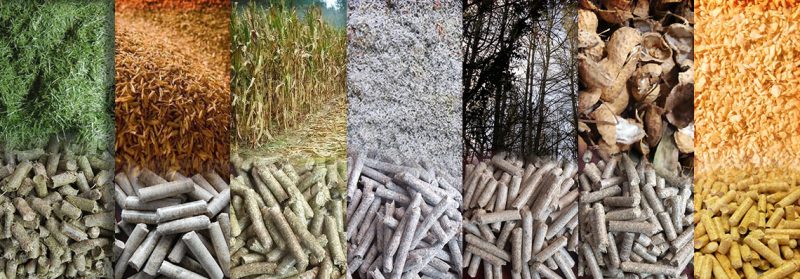Wood pellet biomass price, in particular, as well as the costs of various other sustainable materials, is a topic of significant interest in an era where the health of our planet and environmental issues are receiving more attention than ever before. In this article, VietnamWood will provide essential information about wood pellet biomass and wood pellet biomass price.
Read more: What are Wood Pellets? Top 4 Vietnam Wood Pellets Manufacturers
What is wood pellet biomass?
Wood pellet biomass refers to a specific type of biomass fuel made from compressed and densely compacted wood particles. It is a renewable and sustainable energy source derived from organic materials, primarily wood, and is used for various heating and energy-generation applications.
To purchase wood pellet biomass at a reasonable price, it’s essential to have a deeper understanding of this renewable energy source. Here, VietnamWood will introduce some fundamental characteristics of it:
Renewable and Sustainable
Wood pellet biomass is considered renewable because it comes from trees and wood products that can be replanted and regrown. This makes it a sustainable alternative to fossil fuels, such as coal or oil.
Clean-Burning
Wood pellets burn cleanly and efficiently, producing minimal emissions compared to traditional fossil fuels. They release significantly less carbon dioxide (CO2) when burned, making them a more environmentally friendly option.
Energy Generation
Wood pellet biomass is commonly used as a fuel source in biomass power plants. These power plants generate electricity by burning wood pellets to produce steam, which drives turbines to generate electricity. This is a carbon-neutral process as the CO2 released during combustion is roughly equivalent to the CO2 absorbed by the trees during their growth.
Environmental Benefits
The utilization of wood pellet biomass plays a pivotal role in addressing critical environmental challenges. By opting for wood pellet biomass as a sustainable energy source, we actively contribute to the reduction of greenhouse gas emissions, which are a primary driver of global climate change.
Factors affecting wood pellet biomass price

There are numerous factors that can influence wood pellet biomass prices, ranging from microeconomic to macroeconomic factors. Below are some of the most common and significant factors directly affecting wood pellet biomass price:
Raw Material Costs
The cost of the raw materials used to produce wood pellets, such as wood chips, sawdust, or wood shavings, plays a significant role in determining the pellet’s price. Fluctuations in the availability and price of these feedstocks can impact the overall cost of production.
Production and Processing Costs
The expenses associated with pellet manufacturing, including processing, transportation, and storage, can affect the final wood pellet biomass price. Energy and labor costs, as well as the efficiency of production facilities, play a role in determining these costs.
Market Demand
Market demand for wood pellet biomass is a crucial factor. Increased demand, especially during the heating season, can lead to higher wood pellet biomass price. Conversely, lower demand or oversupply may result in lower price.
Energy Prices
The cost of competing energy sources, such as natural gas, heating oil, or electricity, can influence the demand for wood pellet biomass. When traditional energy prices rise, wood pellet biomass can become a more attractive and cost-effective alternative. As a result, wood pellet biomass price also fluctuate accordingly.
Government Policies
Government policies and incentives related to renewable energy and biomass can have a significant impact on wood pellet biomass price. Subsidies, tax credits, and regulatory requirements can influence market dynamics.
Exchange Rates
Wood pellet biomass is often traded internationally, so exchange rates can affect wood pellet biomass price. Currency fluctuations can impact the cost of imports and exports, which, in turn, may influence domestic prices.
Transportation Costs
The transportation cost of wood pellets biomass, from their production hubs to the ultimate end-users, holds a pivotal role in determining the final wood pellet biomass price. It’s important to recognize that the geographical factor plays a significant role in this aspect.
Longer distances covered during transportation and any associated logistical complexities can inevitably result in escalated transportation expenses. Therefore, it’s imperative to acknowledge that the geographic distribution and efficient management of these transportation challenges profoundly influence the pricing dynamics of wood pellet biomass.
Global Market Conditions
Global market trends, including the supply and demand dynamics of biomass fuels, can influence wood pellet biomass price. Factors like international trade agreements and trade restrictions can also play a role.
Instructions on how to buy wood pellet biomass at the right price

With the advantages mentioned above, it’s crucial to conduct thorough research and preparation before purchasing wood pellet biomass. Otherwise, you and your business may encounter difficulties during transactions and decision-making. Therefore, VietnamWood will outline some key considerations when seeking wood pellet biomass suppliers.
Research and Evaluation
First and foremost, you need to have a solid understanding of the market and the particleboard industry in Vietnam. Research potential factories by checking their websites, reading reviews from previous customers, and even engaging in direct conversations with potential partners.
Product Quality
Ensure that the factory has the capability to produce high-quality particleboard products that meet your standards and requirements. This can be assessed by requesting product samples or even visiting the factory to observe the production process firsthand.
Infrastructure and Technology
Check the factory’s infrastructure, including production equipment and technology. A factory with modern equipment and advanced production processes is more likely to ensure higher quality and performance.
Support Services
When working with a factory located abroad, support services are crucial. Inquire about post-sales support, response time in case of issues, and their ability to address problems promptly.
Certifications and Documentation
Verify whether the factory holds necessary certifications and documentation such as quality certificates, environmental certifications, ISO quality management certifications, etc. This ensures they adhere to international standards and maintain a professional attitude.
Pricing and Contracts
Conduct a thorough price and contract analysis by soliciting quotations and contract terms from various factories. Ensure that all pricing details, associated costs, and contractual terms are not only discussed but also meticulously understood prior to finalizing any contractual agreement.
This meticulous approach to contract negotiation and pricing comparison serves as a prudent and essential step to safeguard your interests and achieve a mutually beneficial partnership with the selected factory.
Interaction and Communication
Observe how the factory interacts and communicates with you during the initial inquiry process. A smooth and responsive interaction model can indicate a cooperative spirit for future collaboration.
Factory Visit
If circumstances allow, consider scheduling a visit to the manufacturing facility to personally witness the production process and interact with the dedicated team behind it. This immersive experience not only offers valuable insights into the intricate workings of the facility but also allows you to establish a meaningful connection with the skilled professionals driving the production. By doing so, you gain a deeper and more comprehensive understanding of the facility’s operations and the expertise of the factory’s workforce.
Address providing cheap wood pellet biomass

It’s essential to recognize that wood pellet biomass prices can vary regionally and over time due to the interplay of these factors mentioned above. Understanding these influences can help consumers and producers make informed decisions in a dynamic market.
However, this is not an easy task and can be quite time-consuming. In case your business lacks the time or manpower for this endeavor, let VietnamWood assist you in completing the remaining part.
VietnamWood has a network of over 1000 wood manufacturing businesses and wood product suppliers within the territory, among them are top manufacturers in the sustainable materials and renewable energy sector for you to choose from.
Additionally, we can facilitate on-site visits to these facilities to help you make more informed decisions. So, if you’re interested or have any questions, please don’t hesitate to contact us for timely assistance.





